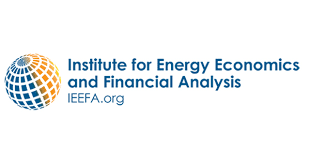Since the early 2010s, the world has relied heavily on China for photovoltaic (PV) equipment. The massive concentration of the entire PV value chain in a single country poses a risk to other countries. In recent years, India has taken several steps to reduce its reliance on China and promote domestic PV manufacturing.
PV manufacturing has grown rapidly in the last two to three years, mirroring the favourable policy environment created by the Indian government. From 18GW in March 2022 to 38GW in March 2023, India’s cumulative module manufacturing nameplate capacity has more than doubled. In comparison to FY2022, Indian PV exports increased by more than 5 times in FY2023.
According to a report released by the Institute for Energy Economics and Financial Analysis (IEEFA), which is headquartered in Ohio, the United States, approximately 110 gigatonnes (GW) of photovoltaic (PV) module manufacturing capacity is expected to be operational in India by the fiscal year 2026, making the country self-sufficient. According to the research, India will have a significant presence in all upstream components of PV manufacturing, including cells, ingots/wafers, and polysilicon.
The Production Linked Incentive (PLI) scheme is one of the primary drivers of the growth of India’s entire PV manufacturing ecosystem. Aside from improving infrastructure at all stages of PV manufacturing, from polysilicon to modules, it will also result in the development of an ancillary market.
PV technology is always evolving. Nonetheless, despite growth and demand from other export markets, the Indian PV manufacturing sector continues to face headwinds. These include a continued reliance on imported components, particularly upstream components such as polysilicon ingots and PV machinery.
Based on research conducted by JMK Research and Analysis for IEEFA, the report titled “India’s Photovoltaic Manufacturing Capacity Set to Surge” also states that once India achieves self-sufficiency in the next two to three years, it must focus on expanding its reach in other global markets and offering its PV products as a viable alternative to China in terms of quality and price. Meanwhile, policy stability is essential for maintaining investor confidence in the market. Furthermore, a lack of skilled labour to install and operate high-tech machinery, particularly cells and other upstream components, is an ongoing issue.
